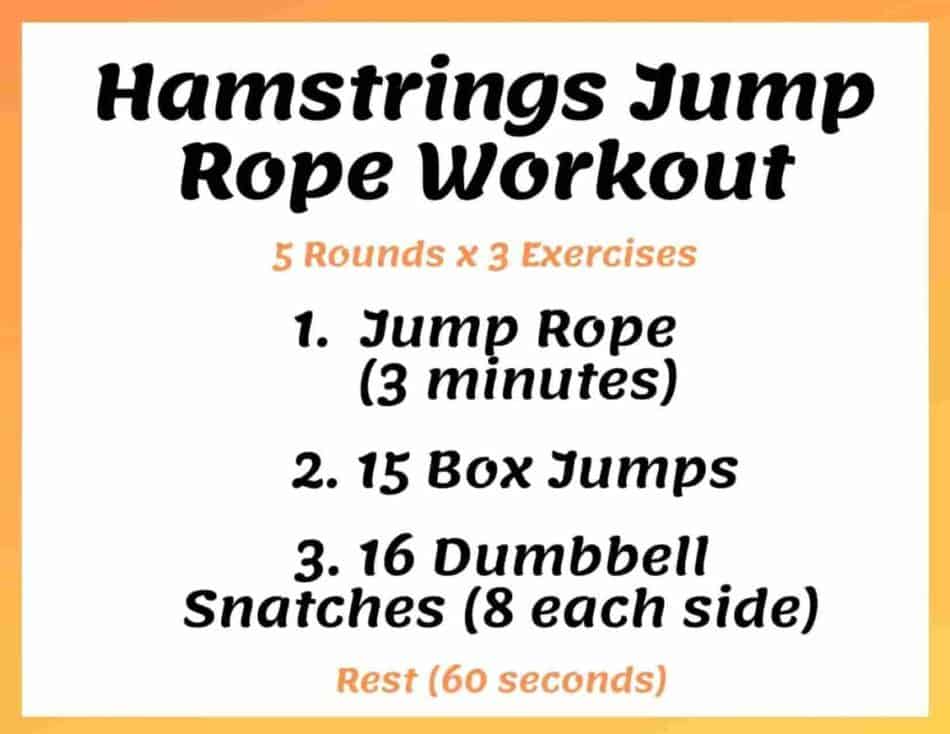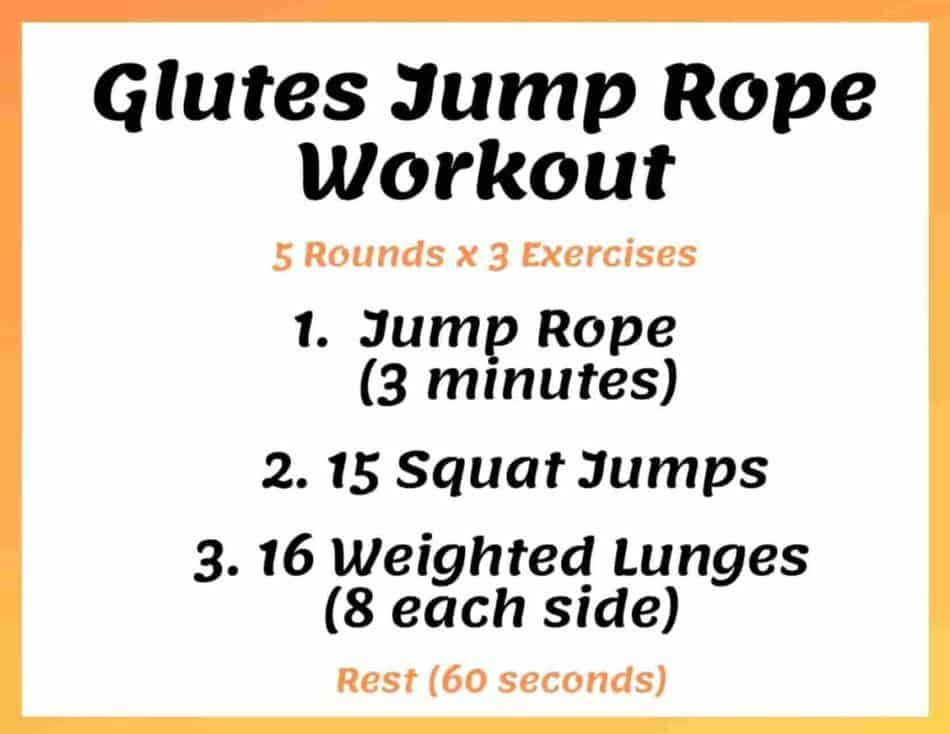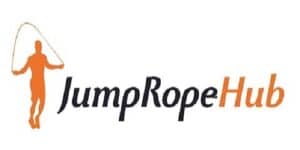Growing up, I played sports year-round. I was usually one of the bigger kids too, so speed wasn’t always my strong suit. Knowing that, I had to get creative and find different ways to become faster. Jumping rope turned out to be extremely effective.
Jumping rope is a great exercise to become faster. It strengthens your hamstrings, glutes and calves, which are the 3 most important muscles for sprinting. Jumping rope also requires the use of both your hands and your feet, similar to running.
The best way to become faster is through a combination of jump rope and strength training exercises. Here are some of the most effective ways to train your hamstrings, glutes, and calves to make you faster.
Train your hamstrings to make you faster
Your hamstrings, the large muscle on the back of your thigh, is probably the most important muscle to train if you want to become a faster runner or sprinter. It’s also the muscle you’re most likely to pull or injure, especially if it’s neglected.
The hamstrings are comprised of three different muscles:
The biceps femoris is the muscle that your knee relies on to flex and rotate and your hip uses to extend. The semimembranosus is the muscle that the thigh uses to extend and the tibia uses to rotate. The semitendinosus is also the muscle the thigh needs to extend and the tibia needs to rotate.
All three of these muscles play an important part in being able to explode off the line and run fast.
Jump rope exercise to strengthen your hamstrings
One of my favorite jump rope workouts to train your hamstrings is a combination of jumping rope, box jumps, and dumbbell snatches.
The goal when training your hamstrings, specifically when looking to become faster, is to do explosive exercises. If you think about it, sprinting is an explosive movement one that requires the use of your “fast twitch muscle fibers”. We want to replicate that as much as possible in our workouts.
One of my favorite workouts for this is a 5 round circuit, made up of 3 different exercises. You’ll start by doing 3 minutes of jump rope, followed by 15 box jumps and 16 dumbbell snatches (8 on each side).

There are a variety of different hamstring exercises which are great for making you faster. A simple Google search will turn up endless variations which you can swap out for the box jumps and snatches.
On to the glutes!
Train your glutes to become faster
The glutes are another really important muscle to train when looking to become faster. They are some of the largest muscles in the human body. When sprinting, the glutes primary role is to support propulsion.
The glutes are made up of three different muscles:
The gluteus maximus, the strongest muscle in the body, is responsible for moving the hip and thigh. The gluteus medius is responsible for allowing the thigh to rotate outward, from the body. And, the gluteus minimus is responsible for hip extension.
It’s been suggested in various studies that the glutes may play an even bigger role in sprinting than the leg muscles. I have a really solid jump rope workout that focuses on the glutes, for this reason.
Jump rope exercise to strengthen the glutes
One of my favorite jump rope workouts to train the glutes is a combination of jumping rope, squat jumps, and weighted lunges.
Similar to the hamstrings workout, the goal here is to perform explosive exercises. There are a ton to choose from too, however the squat jumps and weighted lunges are some of my favorites.
For this workout, we’re doing a 5 round circuit as well, made up of 3 different exercises. We’ll begin by doing 3 minutes of jump rope (high-knees), followed up 15 squat jumps and 16 weighted lunges (8 on each side).

Some of my other favorite exercises that target the glutes are Bulgarian squats, landmine squats, lateral lunges, and burpees. I’ll swap these in and out when I feel like switching things up.
Next, the calves!
Train your calves to become faster
The calves are another muscle group that play a significant role when looking to become faster. Strong and flexible calves are key for springing from one foot to the next and greatly impact overall speed.
The calves are made up of two major muscles:
The gastrocnemius and the soleus span the entire length of the lower leg. bridging the knee to the heel. These muscles are responsible for maintaining balance when running. They also play a big role in being able to start and stop on a dime.
While it’s important to have strong calves to make you faster, it’s more important to have flexible calves. Both strengthening and stretching these muscles will help you become faster.
Jump rope exercise to strengthen the calves
One of the best jump rope workouts to strengthen the calves is a combination of jumping rope, seated dumbbell calf raises, and box jumps.
Here we’re also going to focus on explosive movements, but also movements that stretch out the calves while taxing the muscles. The jump rope routine for this workout is a great calf burner too!
For this workout we’ll start with 3 minutes of jump rope, specifically a calf focused jump rope exercise (in and outs). You’ll follow this up with 20 seated dumbbell calf raises (10 on each side) and 15 box jumps.

It’s always a good idea to swap out these exercises with other calf focused exercises, to avoid plateaus. Some of my favorite calf exercises are hill runs, standing barbell calf raises, and seal jumps.
Remember to stretch!
Stretching is crucial to become the fastest version of yourself. Regular stretching helps promote muscular coordination, improve your overall range of motion, and prevent injuries.
Here are a few of favorite stretches to keep your hamstrings, glutes and calves as flexible and fresh as possible.
Forward Fold (hamstrings and glutes)
The Forward Fold is a great stretch to maintain flexibility in your hamstrings and your glutes. It also feels amazing!
There are two different variations to this stretch, that I’m aware of. The first is with your legs together (feet a few inches apart). The other is with your legs spread out wide (Wide-Legged Forward Fold).
Regardless of the variation you go with, the goal here is to hinge forward at the hips dropping your hands straight down to the floor. Ideally you’ll keep your knees locked out to accentuate the stretch is your hamstrings. That said, if you need to bend your knees slightly, go for it.
Once you feel the stretch, hold for 10 breaths and return to the starting position. I usually like to repeat this for 3 or 4 times before moving to the next stretch.
Towel Calf Stretch (calves)
You guessed it! The Towel Calf Stretch is a calf focused stretched which will help maintain flexibility in your calf muscles. This is on of my favorites!
You can actually perform this with a belt, rope, or pair of jeans, if you don’t have a towel.
Start by sitting down on the ground with your legs straight out in front of you. With one end of the towel in each hand, wrap the center of the towel around the balls of your foot (one leg at a time). With your knee locked out, pull back on the towel bringing your foot back towards your knee. Hold for 10-20 seconds, then alternate feet.
I’ll usually do this stretch a few times on each foot. It’s a great stretch to start your day and guaranteed to keep your calves flexible.
Lateral Lunge (hamstrings, abductors, groin)
One of my other favorite stretches for maintaining flexibility in my legs is the Lateral Lunge. This one is great for improving range of motion and preventing injury, especially to help from pulling your groin.
Start this stretch by standing up, feet shoulder width apart. With both feet pointed forward, step out wide with your right leg, bending your right knee and straightening out your left leg. You should feel the stretch down the inside of your left leg.
Hold this for 10-15 seconds, then return to standing.
You’ll repeat this on the other side, with your left knee bent and your right leg straightened. This time you should feel the stretch down the inside of your left leg.
I’ll usually do this stretch a few times on each side before moving on.
Get after it!
